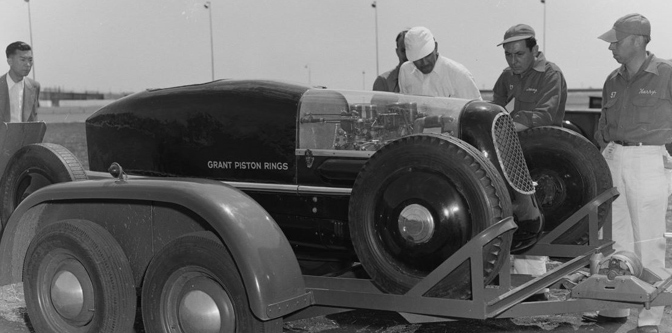Speed & Plastic

Over the past few months, I’ve been researching the history of the American race car. A good part of my studies have made it here to The Jalopy Journal, but I must admit that I’ve also strayed a bit and often found myself reading up on the offerings from other countries such as Germany and Italy.
It’s been a fun exercise. I’ve spent almost 30-years of my life obsessing on the details of American hot rods and so… well, exploring this new world has been a bit like experiencing a Japanese pancake after decades of mom’s recipe. And the thing is, other people and cultures have different ways of accomplishing similar things. There’s lessons to be learned.
One such lesson came from a material that we certainly use, but maybe not in the same ways as others – plastic.
In 1953, Ferrari developed the 375MM with eyes on the Mille Miglia. The car was a traditional Italian design with a big long hood covering a short stroke V12 fed by three Weber carburetors. Early in testing, Ferrari was having an issue getting enough air under that hood and asked Pinin Farina to add a scoop. They did, but the added turbulence created even more issues with the Webers.
To tune just how much air was force fed into the engine compartment, Ferrari created a number of different scoops of different shapes and sizes – using plastic to speed up the fabrication process. The rest, as they say, is history… Plastic became a common material used on Ferrari race cars and even some road cars. Things like scoops, wind screens, splitters, etc… all found themselves made of clear plastic and surrounded by Ferrari red.
Now, on paper this sounds like an aesthetic nightmare of sorts. Plastic? But in the flesh, it’s a mesh of materials that somehow works. In my eyes, it’s as beautiful as it is functional. Here’s just a few examples:
The interesting thing is that since focusing on Ferrari’s use of plastic, I’ve started to notice that a very few Americans were using the same techniques. Remember the “Unknown Roadster” from a couple of weeks back? It used a plastic head faring to match the profile of its plastic wind screen:

Or, how about the Hilborn Streamliner? Who knew that ole Stu ran a plastic hood to show off his wares? Check it out:

Pretty great, right? And all of this has lead me to believe that we, as traditional hot rodders, have really underutilized the material. It’s just another example of yet another avenue that we’ve yet to walk down, explore, and utilize.
Think about a ’29 roadster on deuce rails. Something racy. Something fast. It’s black of course, but it’s different. Instead of the ubiquitous Hallock or your standard Ford windshield sanctions, this one is almost naked on the cowl and instead features a vintage Grand Prix style wind faring made of plastic. And those hood sides? They are solid, but complimented by simple flat Ferrari inspired scoops.
Like traditional hot rods themselves, the options are quite literally limited by only your imagination. You just have to have the guts to do something different… to act on inspiration… to innovate using history as your guide.








